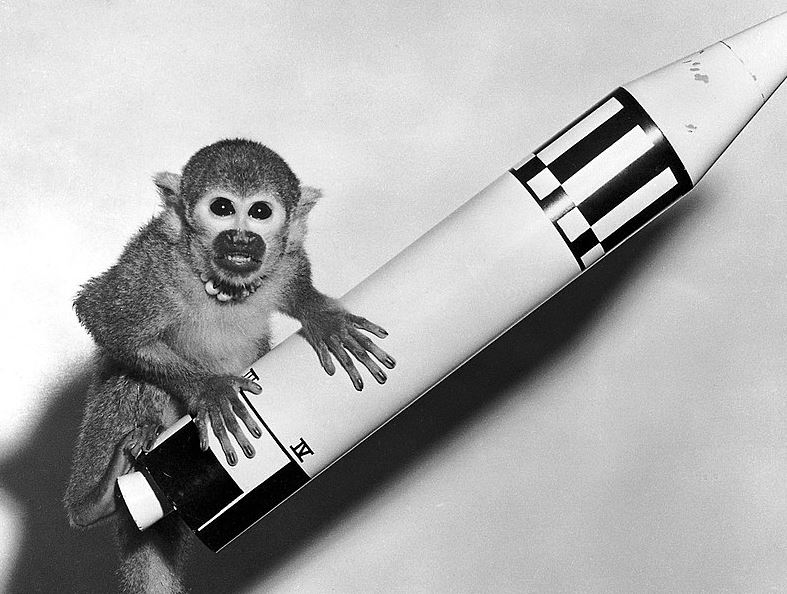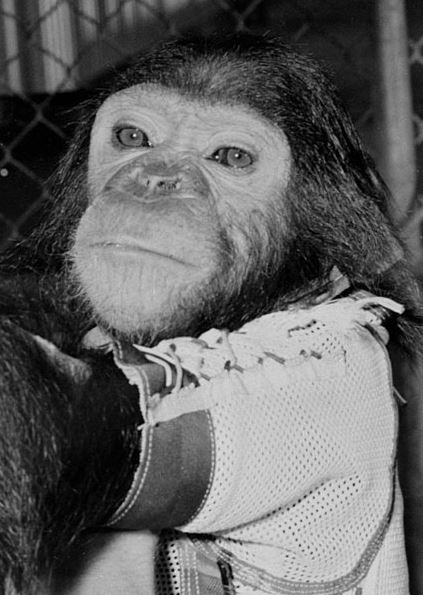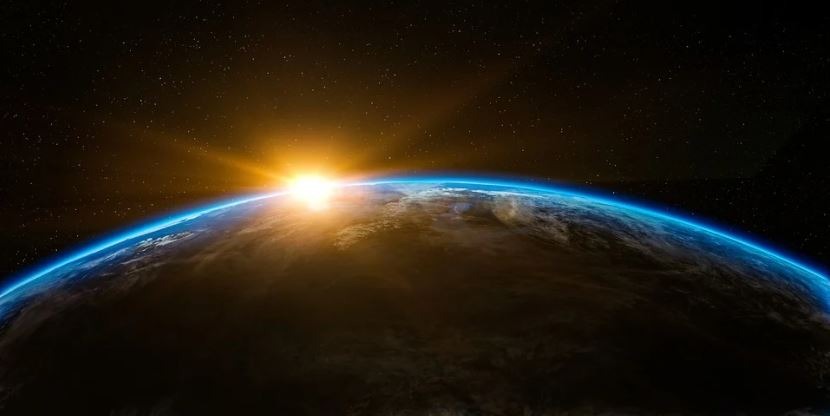Apollo 11 launched into space in July 1969, and ‘Buzz’ Aldrin and Neil Armstrong successfully made the first crewed lunar landing. Millions of homes saw broadcasts of the television images of the men taking humankind’s very first steps on the surface of the moon.
But numerous animals paved the way to this historical event, and several furthered astronautical research and space exploration afterward.
Animals have been used as subjects for test flights on balloons and planes since the 18th century. A sheep, rooster, and duck were flown in a newly invented hot-air balloon in 1783. The balloon landed safely after flying for 2 miles (3.2 kilometers).
The 1940s to 1950s
Fruit flies were the first-ever animals in space, launched on February 20, 1947, in a captured Nazi V-2 rocket. The insects reached an altitude of 68 miles or 108 km and were retrieved alive via parachute.
Albert II was the first monkey to venture out in space on June 4, 1949. He reached 83 miles (134 km) but died on impact after the parachute failed. A preceding monkey, Albert I, also died when the V-2 rocket failed before reaching the peak altitude. Albert III and IV, two other monkeys, also died when their ships failed.
Launched on August 15, 1950, a mouse attained 85 miles (137 km) but died when its rocket disintegrated because of parachute failure. Many other mice were launched to space during the 1950s.
Overall, 32 monkeys have traveled to space, including squirrel, pig-tailed, rhesus macaques, and cynomolgus monkeys. Chimpanzees have also gone.
The Soviet Union launched 12 dogs in the 1950s on multiple suborbital flights. They used stray dogs since they were thought to be competent in handling the extreme cold.
Laika became the first-ever living being to orbit the Earth on November 3, 1957, aboard the Sputnik 2. She died some hours into the flight due to stress and heat.
On May 28, 1959, squirrel monkey Baker and rhesus monkey Able became the first animals to return to the planet after space flight successfully. The monkeys withstood gravity 32 times the pull of the Earth’s and were weightless for about nine minutes of their 16-minute flight.
On July 2, 1959, the Soviet launch carried the first rabbit and two dogs into space.
The 1960s
The Soviet Sputnik 5 was the first to carry back animals alive from orbit on August 19, 1960. The passengers were the dogs Strelka and Belka, plus fruit flies, two rats, 42 mice, and a gray rabbit.
Three months before Alan Shepard’s flight, Ham the Chimpanzee was launched on a sub-orbital trajectory in a Mercury capsule on January 31, 1961. On November 29, 1961, Enos became the first monkey to circle a Mercury spacecraft. Both chimps made it through their flights.
The first cat was launched into space on October 18, 1963, by the French. Félicette had electrode implants in her skin to communicate her condition. She made it to an altitude of 100 miles (160 km) and arrived safely.
Between 1964 and 1966, China launched dogs, rats, and mice.
Russian space dogs Ugolyok and Veterok orbited a record off 22 days and landed safely on March 16, 1966. This record for the longest space flight by dogs remains standing.
In 1968, the Soviet Zond 5 was the first spaceship to circle the moon, bearing a payload of two Russian tortoises, bacteria, seeds, mealworms, plants, and wine flies. Zond 6 shuttled a similar trajectory subsequently that year, but a malfunction exterminated the biological specimens on the return trip.
NASA launched a series of Biosatellites in the late 1960s, which carried plants, microorganisms, frog eggs, and insects. The third and final Biosatellite brought a pig-tailed monkey. It died from a heart attack hours after docking.
After the human landing on the moon in 1969, animals launched into space no longer made it to the headlines. However, spacecraft still took biological payloads, including insects, turtles, rabbits, amoebae, fish, algae, spiders, and jellyfish. Two female European garden spiders named Anita and Arabella spun webs aboard NASA’s space station Skylab in 1973 for
59 days. Biological payloads have also traveled on the space stations of both America and Russia and NASA’s Space Shuttle.
From 1966 to 1996, a series of 11 Bion satellites was launched by Russia. The research partners included China, the United States, the European Space Agency, Canada, Austria, Bulgaria, the Commonwealth of Independent States, Hungary, East Germany, Czechoslovakia, Germany, Poland, France, Lithuania, Ukraine, and Romania.
The 2000s
Tardigrades were the first living creatures to survive in outer space in 2007. So perhaps it’s no wonder, as these microscopic invertebrates, also called water bears, can deal with nearly anything on Earth. Radiation, lack of oxygen, dehydration, freezing cold; nothing phases a tardigrade.
The tardigrades were dehydrated ere the flight and then circled the Earth for ten days outside a rocket. When they were re-hydrated on their arrival back to the planet, scientists found that 68% had survived space radiation and the extreme cold.
The 2010s to 2020s
During the 2010s, countries have sent a variety of animals, including mice, turtles, insects, worms, more Tardigrades, extremophiles, arachnids, insect eggs, monkeys, and apes in space.
SpaceX CRS-22 launched Hawaiian bobtail squids and tardigrades (water bears) on June 3, 2021, to the ISS. The squids were placed into orbit as hatchlings and will be examined to note if they can integrate their symbiotic bacteria while in space into their light organ.



